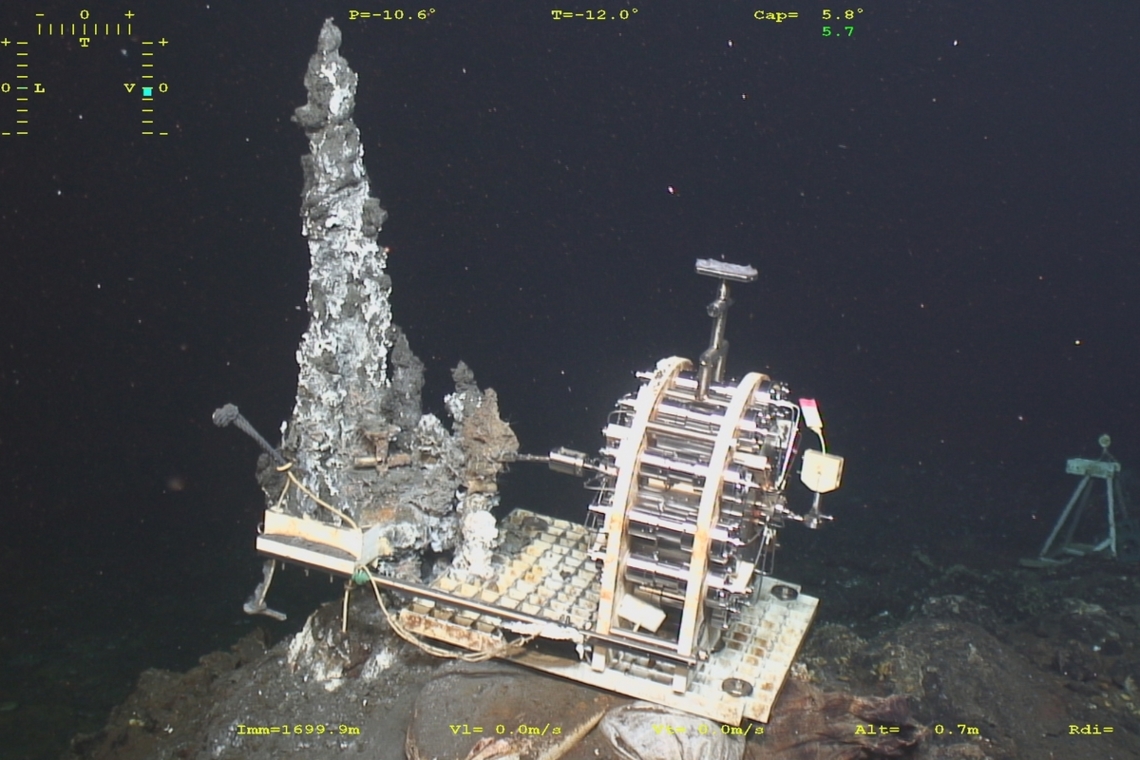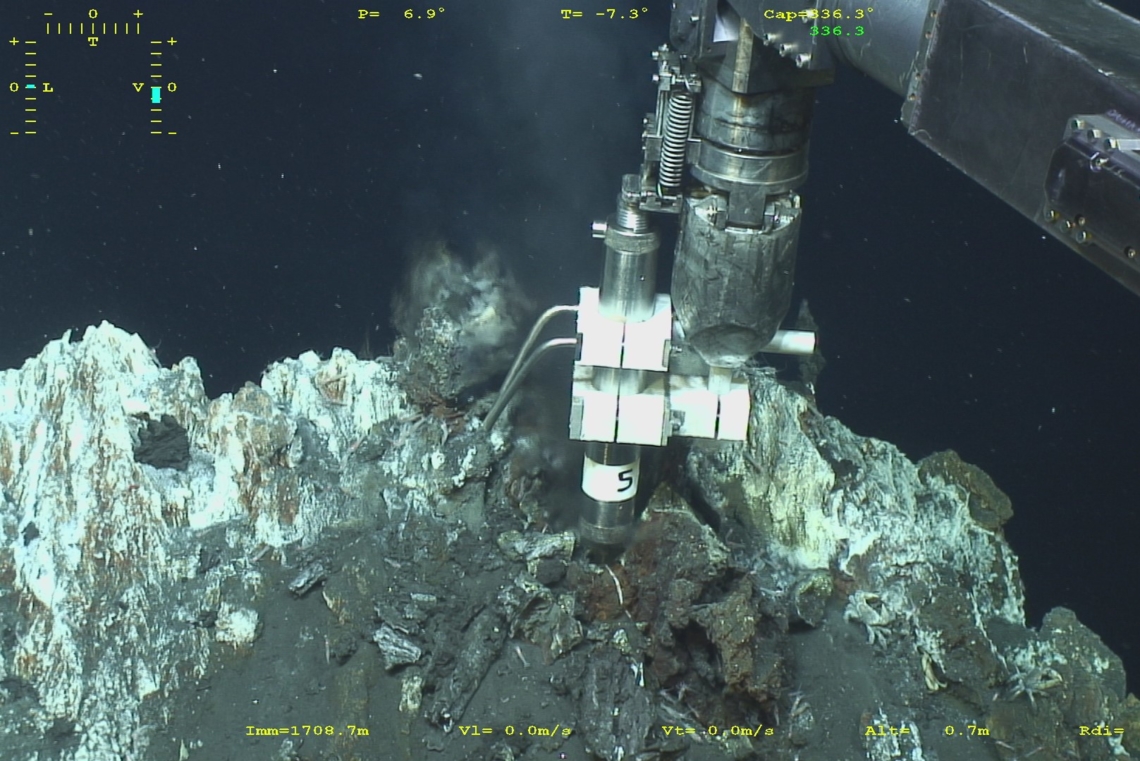Hydrothermal fluid chemistry
Seawater percolating in the oceanic seafloor through fault network, sees its chemical composition being modified via water-rock interactions along its flowing pathway, before discharging at the seafloor as high temperature hydrothermal fluids (up to 360°C). These fluids are particularly enriched in metals and gases, e.g. Fe, Zn, Cu, REE… et N2, CO2, H2S, CH4, H2... respectively, by up to 106 compared to initial seawater composition. In 2013, a new hydrothermal vent site, named Capelinhos, was discovered at about 1,5 km to the East of the main Lucky Strike hydrothermal field. In the last ten years, we sample yearly high temperature hydrothermal fluids with gas-tight titanium syringes at thirteen vent sites distributed over the entire Lucky Strike hydrothermal field. The temporal monitoring of their chemical composition has shed light on the particular chemical composition of Capelinhos’ fluids, which are radically distinctive from other vent fluids as evidenced by low chlorine content (up to ~230 mmol/l) and very high dissolved iron content (>2,4 mmol/l) ever measured at this vent field.
The annual chemical monitoring of these thirteen sites provide the grounds to propose a new model of hydrothermal circulation based on a single source feeding the entire Lucky Strike hydrothermal field and undergoing phase separation process at 2500 - 2800 m below seafloor, at the roof of the magmatic chamber. A large lithospheric fault enables the rapid discharge of these fluids at the Capelinhos site, with preservation of its primary chemical characteristics acquired at the roof of the magmatic chamber, while all other fluids undergo conductive cooling during their ascent to the seafloor with a significant loss of about 65% of their dissolved iron content. Fracturing network together with oceanic crust permeability gradients at the layer 2A transition play a major role in controlling both the hydrothermal circulation pathway and the chemical composition of emitted hydrothermal fluids. Fluid temperature and seismicity measured in-situ via seabed instrumentation indicate the occurrence of events acting on the time scale from hour to months. Thus, we developed an autonomous and sequenced multi-sampler, named DEAFS, capable of monthly hydrothermal fluid sampling without human presence. The outcomes will allow us to better constrain the impact of tectonic, seismic and magmatic activity on the composition of these fluids.
← Read the 10 success stories published to celebrate 10 years of monitoring on EMSO-Azores →
|



